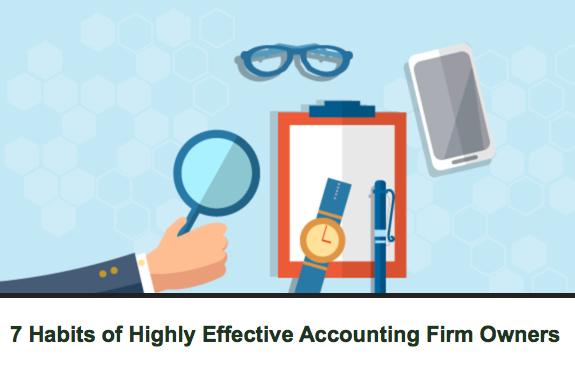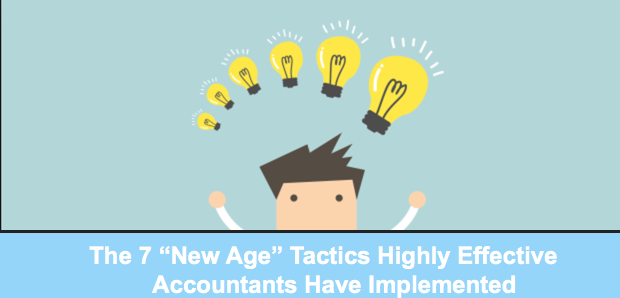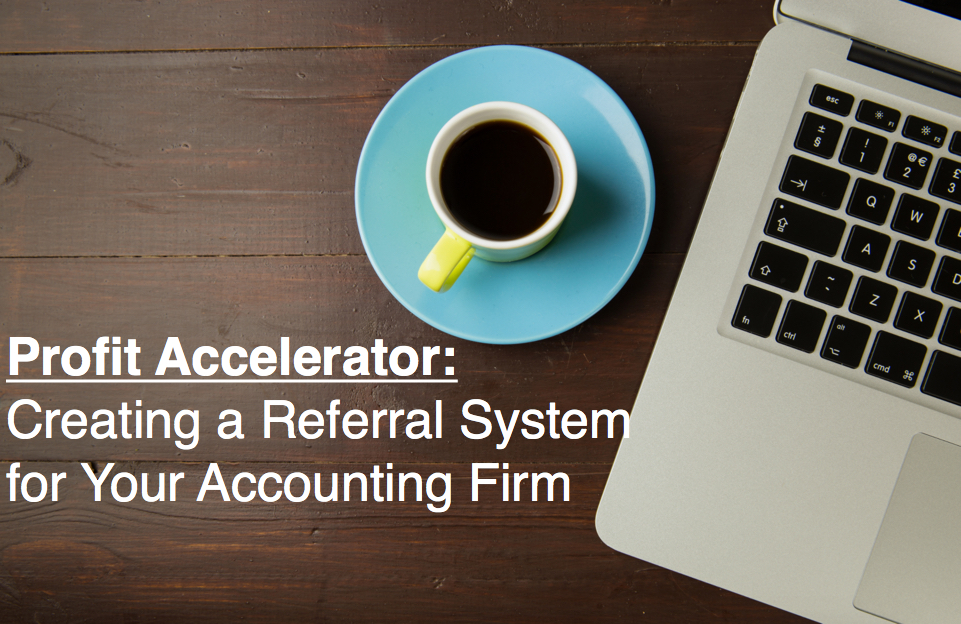The 7 Habits of Highly Successful Accounting Firm Owners

I recently read Stephen R. Convey’s rendition of the 7 Habits of Highly Effective People and became very curious about how his habits could apply to Accounting & CPA firm owners who are wearing multiple hats.
A lot of the time, Accounting & CPA firm owners don’t have someone taking care of their team building, marketing, sales, bookkeeping, and service offering to their clients.
They have to, somehow, manage all of the different parts of their business, while still trying to be as efficient and effective as possible.
So I set out to do some research on the 7 Habits of Highly Effective CPA Firm Owners who are killing it for their small businesses. This is what I found:
Habit #1 – Manage Their Cash Flow Wisely
The first, and most important lesson I learned in business was “Cash Is King”. If you don’t have cash, you can’t pay your bills. If you can’t pay your bills, your business will be in danger a lot quicker than you’d probably like.
If you are running a small business, especially if it’s a Accounting or CPA firm, you have a solid understanding of how much cash is in the bank account and where your cash flow stands at all times.
I remember learning this lesson, early on in my career while having lunch with the CEO of a small community bank.
He looked at me and said, “When running a business, you need to always know where your cash is. Every morning, I have my CPA send me an income statement, balance sheet and daily bank statement to show me exactly where my business stands financially.”
“Remember this statement if you ever try to start your own business. Cash is the lifeblood of your business. Without it, you’re dead.”
Habit #2 – Set Specific Goals
The second best lesson I ever learned as an entrepreneur was to “10x my goals”, as Grant Cardone’s book states. Have a clear vision on where you want to take your business to and work every single day to try to hit that goal.
What I have found is that most CPA firm owners is they do have goals of themselves. These goals are set in stone and sought after. However most of them are too low: They wind up hitting their goals, when they should have been set way higher.
“The greater danger for most of us lies not in setting our aim too high and falling short; but in setting our aim too low, and achieving our mark.” – Michelangelo
Research has shown that when an individual sets measurable goals for themselves, they are more likely to be achieved. Get out there, set your goals, and make a plan to review the goals and push your business towards success!
Habit #3 – Work As A Team (When Possible)
When trying to run an Accounting firm, you are literally wearing 20+ hats trying to figure out which fire to put out next. Then, try to add on another team member, and things get complicated fairly quickly.
However, if you delegate the to-do list properly, you may find yourself becoming proactive in your day instead of reactive.
Highly successful Accounting firm owners are able to assign tasks they know they are not good at to those qualified enough to handle it. Then, they focus on the items they are good at, and crush it for their businesses.
When thinking of adding a team member, some highly successful small businesses invest in bringing on virtual assistants to take on the tasks they just don’t want to be bothered with. This option saves you, the small business owner, a ton of time and future headaches.
Habit #4 – Invest Money In Knowledge
Most of us went to college and dropped thousands of dollars on our education. But for highly successful firm owners, gaining access to knowledge and growing their minds, didn’t stop in college. They are trying to constantly read up on the next new tool for their business or to spend time focusing on how they could make themselves improve as leaders.
Instead of wasting the business’s money on the next new office chair, highly effective small business owners understand the value of gaining access to knowledge and are willing to pay for it.
Plus, if this new knowledge gets the business to its goals faster, a high ticket price tag can be offered to accelerate it to success.
Habit #5 – Organize Their Business Around the 80/20 Rule
A key influencer of mine, Tim Ferriss, wrote a best selling book on working a 4 Hour Workweek.
Inside of his book, he goes on to discuss the importance of the 80/20 Power Rule, how it could be applied to nearly every avenue of your life and the life of your business.
Essentially, the 80/20 Power Rule (Pareto’s Law) can be summarized as follows:
80% of the outputs result from 20% of the inputs.
Though this idea might sound a bit confusing, Tim Ferriss clears up the uncertainty by summarizing this Principle into two simple questions:
1. Which 20% of sources are causing 80% of my problems and unhappiness?
2. Which 20% of sources are resulting in 80% of my desired outcomes and happiness?
It is simple, yet highly effective when you start applying these questions to not only your business, but your personal life as well.
Highly effective small business owners have mastered these two questions. They have taken steps to remove the sources of unhappiness and increase the sources of happiness in their lives.
Habit #6 – Great Role Models
If you are a small business owner, you already have the hat of “owner” or “boss”. But do you consider yourself a leader? If so, what are the qualities and policies you have in place in your business and in life that showcases your leadership skills?
Most highly effective small business owners practice what they preach and tend to lead from the front. Instead of saying one thing and doing something completely different, they are true to their values and their team members and tend to mold around the type of leader they are watching.
So for example, if you have a great role model who is the leader of the company, they will spark interest in from other aspiring leaders who want to learn from the best and follow along the path in becoming their own great role models.
These great leaders also make sure to have a healthy work/life balance and tend to invoke awesome work perks (Fridays off, Jeans Day, etc)
Making time for a personal life should be a priority because it makes for a happier and more successful business leader.
Habit #7 – Ready, Set, Move
A successful habit of small business owners is knowing that to just need to keep the momentum going, even if there is potential risk that lies ahead. What holds a lot of people back from making the leap into their own business with the idea that they either need more experience or time to get things right.
The truth of the matter is that there is no real “right” time to do anything and you won’t have the perfect playbook to follow. You just have to jump into the arena, get dirty, and start to figure out where to head to next.
Even Richard Branson, Founder of Virgin Records, was quoted: “If someone offers you an amazing opportunity and you’re not sure you can do it, say yes – then learn how to do it later.”













